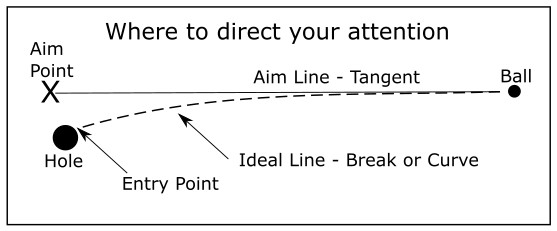No matter what shot you may be playing there are rules regarding “pace of play” in golf. The old saying “Playing TV Golf” actually has new meaning. It’s 40 seconds per shot.
While there are exceptions for green repair in putting, the same rule applies.
New Rule: Rule 5.6 encourages prompt pace of play by recommending that:
- Players should recognize that their pace of play affects others and they should play promptly throughout the round (such as by preparing in advance for each stroke and moving promptly between strokes and in going to the next tee),
- A player should make a stroke in no more than 40 seconds (and usually in less time) after the player is able to play without interference or distraction, and
- Committees should adopt a Pace of Play Policy (rather than only say they may do so).
For reference see: USGA Major Changes encouraging prompt pace of play
I know this is enforced for tournament play, but surely expeditious play is appreciated anytime.
How to speed things up when putting
It’s a good idea to begin reading the green while walking up to the hole. It is fairly easy to read significant breaks from a distance and it saves time. Green read and judging the pace should be two separate routines.
So let’s take a look at the putt in the diagram below and discuss how to approach the putt.

Be ready to play in any case
Aim or Aim Line
Preliminary read and detailed read (Putting: Where to direct your attention)
- Read the green as you approach for slope, amount of slope, grain and general pace. (Seeing a shiny surface indicates grain running away from you and will be faster, dull or dark green surface indicates putting into the grain and it will be slower. )
- Walk up to the hole and survey several things: Walk off the distance from your ball to the hole, looking at the hole find the fall line, is the putt uphill, downhill or flat. (Fall Line – Looking into the hole – grass grows in the direction water runs off the green – one side of the hole should look like a smooth cut and the other side rough. When the superintendent puts the hole in the tool cuts grass on the top side and roots on the bottom side causing a browning affect on the lower side.)
- Walk well back behind the ball and squat down to view the putt. Determine your ideal line, entry point, aim point and aim line.
- Find an intermediate aiming point right in front of the ball and in line with your aim point
- If you start thinking about this stuff while you are over the ball…start over or back away.
Pace or Speed
2nd and separate routine – judging the speed based on your read and making the putt (Face and Pace: Making more putts)
- Walk up to the ball and place your putter behind the ball with the face perpendicular to your aim line. You may want to use one hand for this. Take enough time to make sure the putter face is square to your intended line.
- Grip the putter.
- Place your feet parallel to your aim line.
- Take several practice strokes short of the ball looking at the hole. Use the same stroke you will need for the putt.
Make the putt
- Don’t take a lot of time to make the putt. Draw a line “with your eyes”… back from your aim point to the ball.
- Look at your “quiet eye” point on the ball. (Putting Aids – Your Eyes)
- Make the putt with the stroke your practiced.
Notes
Do not decelerate during the stroke. Swing the putter with dead weight. Stroke the ball with the head of the putter. Not your hands.
Listen for the ball to go in the hole on short putts. Only look up after the ball is gone on longer putts.
Hold your form to measure whether or not you made a good stroke. In other words, don’t just stand up. Take note of where you end up with the stroke and watch where the ball goes. You may need the read if you miss.
Green repair rule
Expeditious repair doesn’t count toward your 40 seconds.
New Rule: Rule 13.1c(2) allows repair of almost any damage on the green:
“Damage on the putting green” is defined to include all types of damage (such as ball-marks, shoe damage, indentations from a club or flagstick, animal damage, etc.), except aeration holes, natural surface imperfections or natural wear of the hole.
Ready golf is allowed (second bullet point most likely)
6.4 Order of Play When Playing Hole
Purpose of Rule: Rule 6.4 covers the order of play throughout a hole. The order of play from the teeing area depends on who has the honour, and after that is based on which ball is farthest from the hole.
- In match play, the order of play is fundamental; if you play out of turn, your opponent may cancel that stroke and make you play again.
- In stroke play, there is no penalty for playing out of turn, and you are both allowed and encouraged to play “ready golf”, that is to play out of turn in a safe and responsible way.
